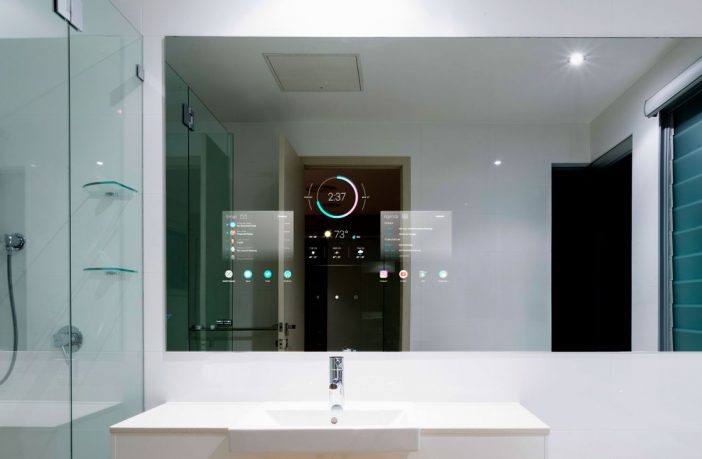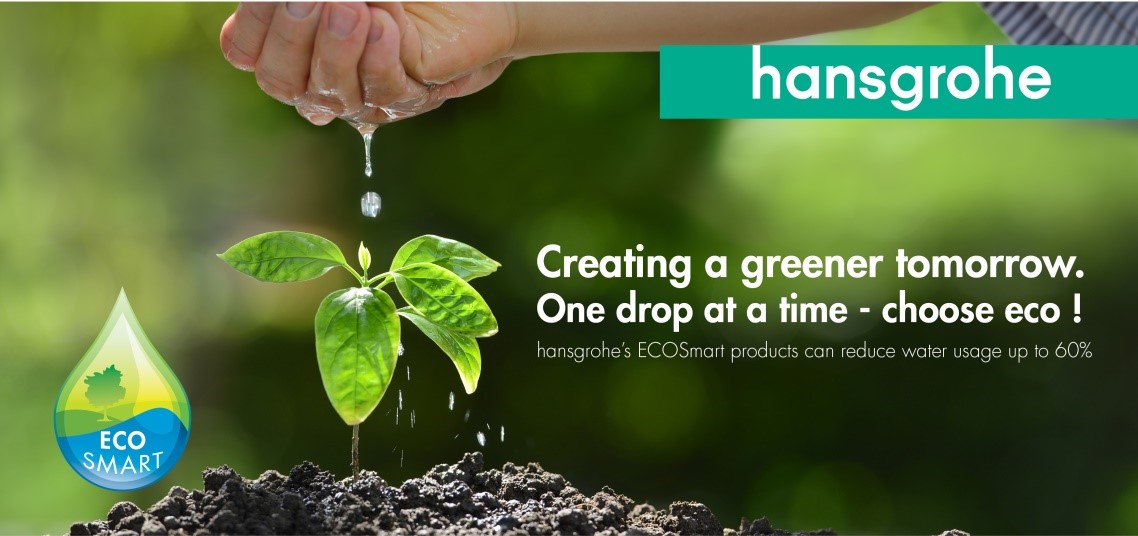Home automation, from voice-controlled virtual assistants to app-controlled thermostats, has quickly and unexpectedly ushered the future into our own homes. As technology continues to progress, the way we interact with our environment will likely only grow more and more futuristic – even spaces as personal as our home bathrooms. While the prospect of such a highly digitized personal life may be daunting to some, others see this trend’s potential for improving not just comfort, but health and safety as well. Below, we outline some of the technologies that we hope to see in the bathrooms of the future.
Mirrors
The smart mirror is one of the most emblematic technologies of the imagined future bathroom. In this futuristic concept, while doing something as simple as drying your hair or brushing your teeth, you could be reading the news, checking the weather, or watching TV on the mirror right in front of you. Some even imagine the smart mirror as being capable of monitoring its user’s health and relaying pertinent information to the user’s doctor, thereby letting professionals know about health problems immediately and eliminating the need for a physical trip to the physician’s office.
As outlandish as it may seem, versions of the smart mirror actually already exist. Seura’s Smart Display Mirror, for example, transforms the traditional bathroom vanity into a digital hub that can display email, weather, calendar, and more. Even smaller scale versions of the health-monitoring mirror already exist, such as HiMirror, which assesses its user’s skin condition and gives recommendations to make full use of your skincare products. Another product, the simplehuman sensor mirror, encompasses a wide range of lighting settings to allow you to see what your makeup looks like in any environment.
Tubs and Showers
There have been a wide range of interpretations of what the shower or the bathtub of the future will look like, from smart showers that alert you when you’re low on shower products to water-conserving showers and baths to ones that relieve stress with chromatherapy. Some of these already exist, such as Orbital Systems’ Digital Recirculating Shower, which purifies, reheats, and recirculates a few liters of water in a closed loop, promising to save up to 90% water and up to 80% energy. U by Moen Smart Shower, in turn, is a digitized shower with voice activation capabilities that can save temperature presets and be turned on remotely. And if you want to watch TV while bathing or showering, Seura has designed a waterproof TV for you as well.
Toilets
While the bidet is a common feature in Japan, its universal use hasn’t quite permeated the rest of the world yet. In our ideal bathroom of the future, everyone has a bidet – complete with seat-warming capabilities and cleansing jets. Some have even suggested toilets that analyze its contents to monitor user health, while sustainable toilets that minimize water use is a natural point of conversation as well. Kohler’s Numi toilet is an already existing product that boasts heated seat and foot warmers, Bluetooth music capabilities, and ambient colored lighting.
These technologies constitute only a small fraction of the possibilities for the bathroom of the future. From body dryers, to health-checking toothbrushes, to drawers that warm your towels, to flooring that sends out an alert if you fall, the possibilities seem endless. When combined with automated lighting and bathroom-wide voice control, the bathroom of the future seems almost too good to be true. Yet it’s clear that many of these technologies, once considered unrealistic or outlandish, already exist. All that remains is for them to gain widespread use – something which may happen sooner than we think.
- How to Design Safe Bathrooms for the Elderly
- Basic (And Necessary) Recommendations for Designing Accessible Homes
Author: Lilly Cao
This article was first published in Arch Daily and is republished with permission.
Clean drinking water is becoming increasingly scarce. Do your bit to save water. You can start by retrofitting your tap and shower mixers at home with Hansgrohe EcoSmart technology.
Visit the Hansgrohe Showroom in Johannesburg to see the Rainfinity range in action.
Find a Hansgrohe Retail Store near you . Hansgrohe is present in South Africa, Madagascar, Nigeria, Kenya, Botswana, Seychelles, Mauritius, Namibia, Tanzania, Zimbabwe, Ghana and Zambia.

















1 Comment
There are more and more high-tech devices will be aplied in the bathroom to bring us a simple life.